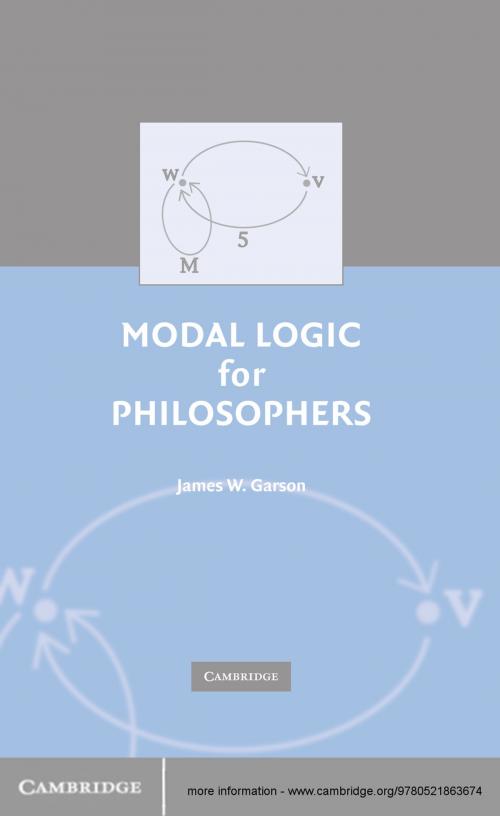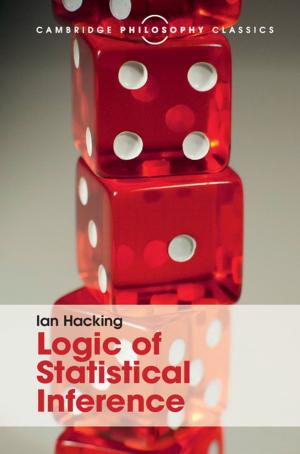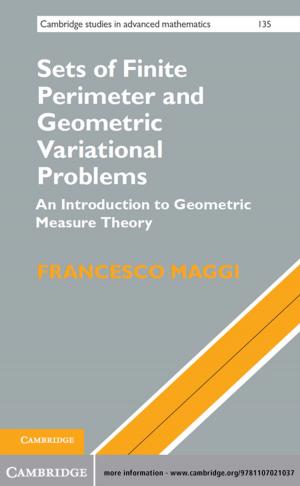Modal Logic for Philosophers
Nonfiction, Religion & Spirituality, Philosophy, Logic, Science & Nature, Mathematics| Author: | James W. Garson | ISBN: | 9781139810586 |
| Publisher: | Cambridge University Press | Publication: | August 14, 2006 |
| Imprint: | Cambridge University Press | Language: | English |
| Author: | James W. Garson |
| ISBN: | 9781139810586 |
| Publisher: | Cambridge University Press |
| Publication: | August 14, 2006 |
| Imprint: | Cambridge University Press |
| Language: | English |
Designed for use by philosophy students, this 2006 book provides an accessible, yet technically sound treatment of modal logic and its philosophical applications. Every effort has been made to simplify the presentation by using diagrams in place of more complex mathematical apparatus. These and other innovations provide philosophers with easy access to a rich variety of topics in modal logic, including a full coverage of quantified modal logic, non-rigid designators, definite descriptions, and the de-re de-dictio distinction. Discussion of philosophical issues concerning the development of modal logic is woven into the text. The book uses natural deduction systems and also includes a diagram technique that extends the method of truth trees to modal logic. This feature provides a foundation for a novel method for showing completeness, one that is easy to extend to systems that include quantifiers.
Designed for use by philosophy students, this 2006 book provides an accessible, yet technically sound treatment of modal logic and its philosophical applications. Every effort has been made to simplify the presentation by using diagrams in place of more complex mathematical apparatus. These and other innovations provide philosophers with easy access to a rich variety of topics in modal logic, including a full coverage of quantified modal logic, non-rigid designators, definite descriptions, and the de-re de-dictio distinction. Discussion of philosophical issues concerning the development of modal logic is woven into the text. The book uses natural deduction systems and also includes a diagram technique that extends the method of truth trees to modal logic. This feature provides a foundation for a novel method for showing completeness, one that is easy to extend to systems that include quantifiers.















